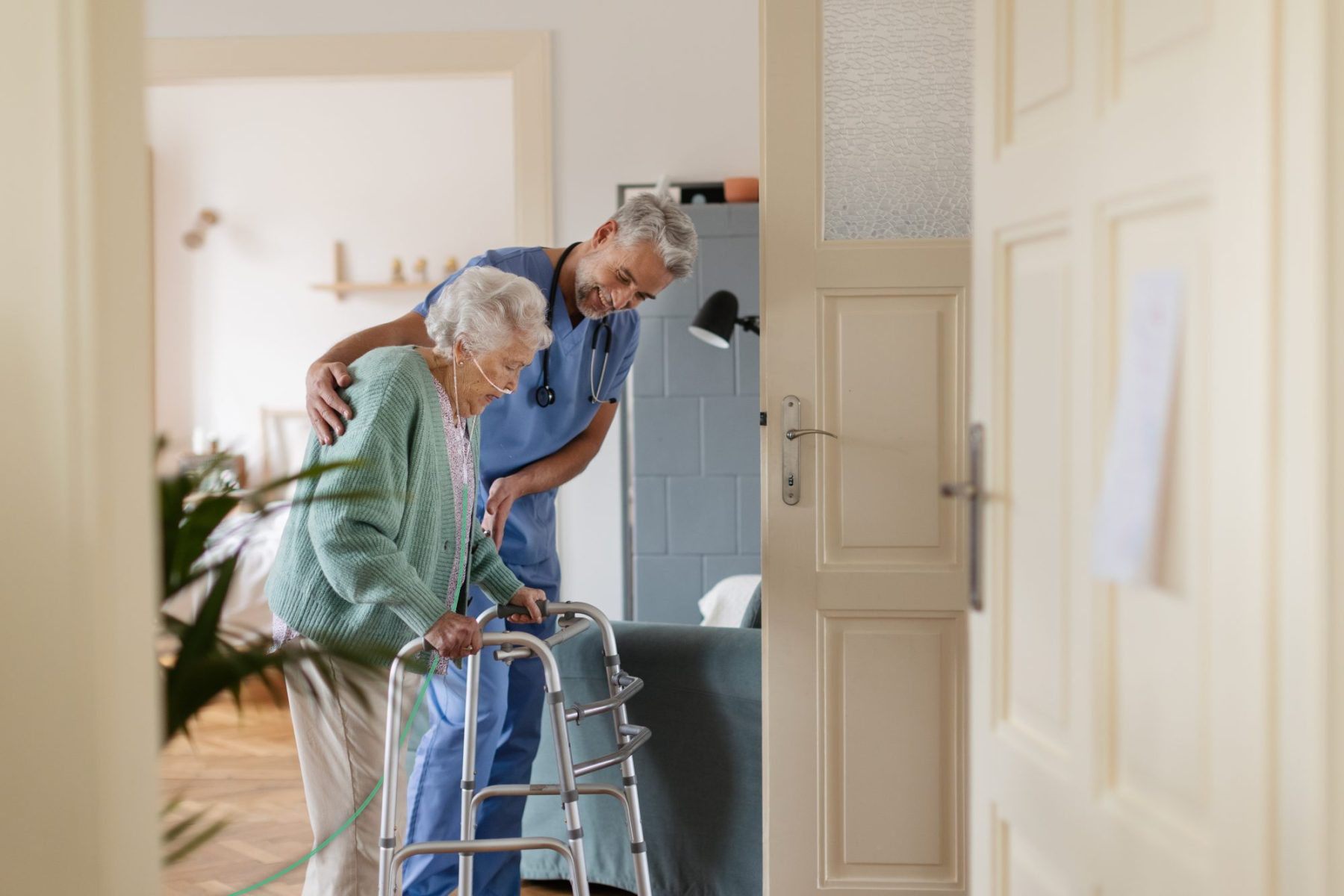3 Myths About Using Oxygen at Home
Living with oxygen therapy is more common than most people realize. Millions of Americans rely on supplemental oxygen for conditions like COPD, pulmonary fibrosis, and other chronic illnesses. In fact, about 6% of U.S. adults (roughly 16 million people) have been diagnosed with COPD — and experts estimate millions more remain undiagnosed.

Yet despite how many people use it, there are still major misconceptions about what life with oxygen looks like.
If you want to test this for yourself, try a simple experiment: when you’re in public, ask 10 strangers if they are familiar with supplemental oxygen or oxygen therapy. Chances are, about 70% will say no. Then ask if they’ve ever seen someone connected to oxygen tubing — for example, a clear tube running from a tank or machine to the nose. Suddenly, about half will say yes: they’ve seen it on TV or in a store, but don’t know much beyond that.

The reality is, many people aren’t familiar with oxygen therapy unless a close family member is on it. Why? Because for most users, oxygen therapy is a 24/7 tether to 50 feet of tubing at home. The public doesn’t see that. When oxygen users leave the house, it’s usually with a smaller portable concentrator for short trips, which hides the full scope of daily life on oxygen.
This gap in awareness has led to some persistent myths about what it’s really like to live with oxygen therapy. These misconceptions don’t just shape public perception — they influence how patients view their own independence and how families think about safety at home.
Myth #1: “Oxygen users can’t move around freely.”
The Truth: Oxygen therapy isn’t meant to confine people — it’s meant to give them their lives back. The challenge isn’t the oxygen itself, but the 50 feet of tubing trailing behind. That tubing often becomes tangled around furniture, caught under doors, or looped underfoot, making movement feel risky instead of freeing.
Many people assume oxygen users must remain seated or in one room, but the reality is that mobility is critical for both physical and mental health. Patients want to keep cooking, doing chores, or simply moving safely from room to room. With the right support and equipment, many can.
Managing tubing effectively is the difference between feeling tethered and feeling independent.

Myth #2: “Long tubing is just an inconvenience, not a real safety risk.”
The Truth: Loose oxygen tubing is far more than a nuisance — it’s a serious hazard. Falls are already the leading cause of injury among older adults in the U.S., and trailing tubing dramatically increases that risk. A single trip can mean broken bones, hospital visits, or even long-term loss of independence.
For patients already facing health challenges, even a minor fall can have major consequences. Caregivers aren’t immune either — they often trip over tubing themselves while assisting loved ones.
That’s why tubing management matters. Keeping oxygen lines organized and out of the way isn’t about convenience — it’s about preventing accidents and protecting independence.

Myth #3: “Home oxygen safety is complicated and expensive.”
The Truth: Many people assume that making the home safe for oxygen users requires major renovations, costly equipment, or complicated systems. The reality is much simpler. Safety often comes down to small, thoughtful adjustments — and one of the biggest is managing tubing.
Yes, sometimes oxygen accessories can seem pricey. The price tag shock is real. But it’s important to see it as an investment in independence and safety. A one-time purchase that reduces daily hazards can lead to major improvements in quality of life — and may help avoid the much greater price tag shock of a hefty hospital bill after a fall.
Oxygen users don’t need a complex setup to feel safe. They need solutions that are easy to use, reliable, and built for everyday life. Something as straightforward as keeping tubing organized and out of the way can transform a home environment from stressful to secure.
At Reel Free, we’ve seen how one simple device can make all the difference — reducing hazards, restoring independence, and giving both patients and caregivers peace of mind.
Breaking the Myths With Simple Solutions
The truth is, living with oxygen therapy doesn’t have to mean losing independence, risking falls, or dealing with complicated systems. That’s why we developed Reel Free — a tubing management device designed to keep oxygen tubing organized, out of the way, and easy to use. It’s a simple, reliable solution built from listening to patients, caregivers, and healthcare professionals.
“I got my retractable oxygen tubing reel 2 weeks ago — love it! I have not tripped or fallen since. Guests don’t trip over the oxygen tubing either. It is worth every dollar I paid for it. Thank you.”
“I have had my Reel Free for 2 weeks and my husband and I are loving it. We are no longer tripping on extra hose nor is the hose getting kinked and tangled up. We looked at a couple of other products but ultimately decided on the Reel Free even though it was more expensive. This unit is made well and works effortlessly. We highly recommend this unit and would buy it again.”
“We ordered this retractable oxygen tubing reel for our brother, a totally disabled Vietnam Vet who kept getting tangled in his oxygen tubing. It was a Godsend. He’s had serious falls and declining health — this reel makes his remaining time more comfortable. Service like this is rare. A great company and a real blessing.”
These voices capture what we hear every day: a one-time investment in safety can prevent falls, reduce stress, and bring peace of mind.
Learn more or order your own Retractable Oxygen Tube Reel at www.reelfree.co/buy.
